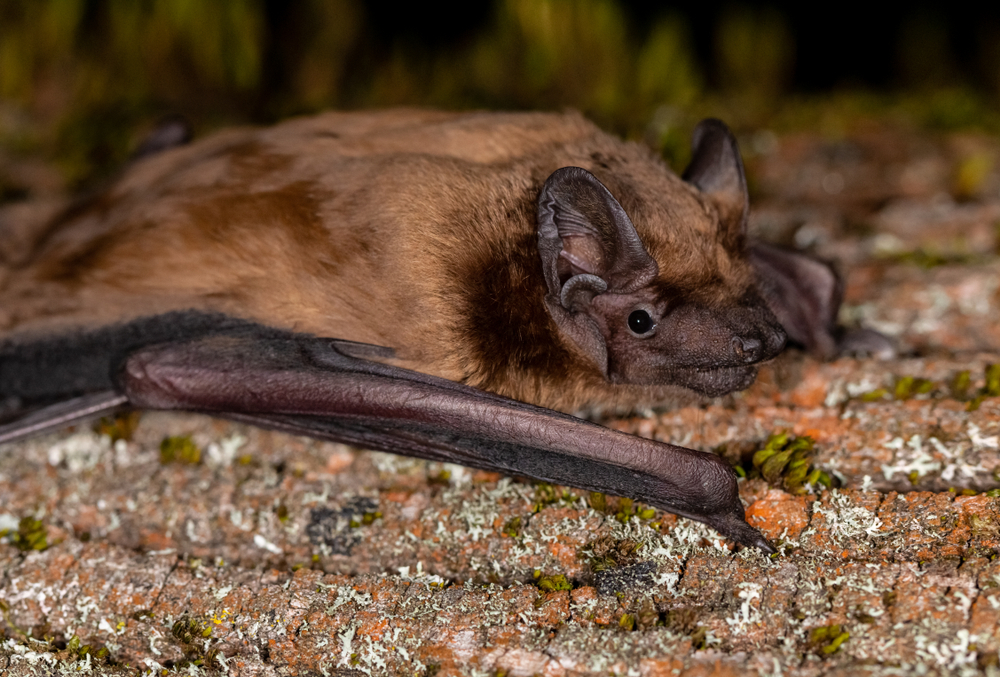Migrating Bats Surf Storm Fronts to Save Energy
Bats are often synonymous with a dark and stormy night mostly for their association with vampires, the fact that theyre nocturnal, and thanks to media like Scooby-Doo. While bats may add an extra layer of eerie to nighttime, their presence in bad weather may actually be due to a migratory advancement.A new study in the journal Science explains how certain bats may use warm storm fronts to aid in cross-continental migration.Bats and Storm SurfingBat migration is notoriously difficult to study because of their nocturnal nature and high-frequency vocalizations. Unable to see or hear bats as they migrated, researchers from the Max Planck Institute of Animal Behavior (MPI-AB) devised a plan.After attaching tiny and lightweight sensors to 71 common noctule bats (Nyctalus noctula), the research team could track the bats as they made their spring migration across Europe.The data pulled from the sensors revealed something incredible. It appeared as though the bats surfed the warm storm fronts as a way to migrate further and use less energy.The sensor data are amazing! said lead study author Edward Hurme, a postdoctoral researcher at MPI-AB and the Cluster of Excellence Collective Behaviour at the University of Konstanz, in a press release.We dont just see the path that bats took, we also see what they experienced in the environment as they migrated. Its this context that gives us insight into the crucial decisions that bats made during their costly and dangerous journeys, said Hurme in the release.Novel Tracking TechnologyEngineers with the MPI-AB developed the novel tracking technology so that it was on 5 percent of the bats body weight and contained multiple sensors for tracking the bats movements and the air temperature around it. The new technology, dubbed ICARUS-TinyFoxBatt tag, also allows researchers to track the bats remotely compared to previous technology, where the research team would need to be close enough to the tagged animal to collect data.The new tags now collect the data daily and compress it into a 12-byte file before transmitting it back to the research team via a novel long-range network. The tags would transmit 1440 daily sensor measurements.The tags communicate with us from wherever the bats are because they have coverage across Europe much like a cell phone network, said senior author Timm Wild, who led the development of the ICARUS-TinyFoxBatt tag in his Animal-borne Sensor Networks group at MPI-AB, in a press release.Surprising Migration PatternsResearchers from MPI-AB decided to track the noctule bats because they are one of four bat species that migrate across Europe, especially the female who are more likely to spend winters in southern Europe before returning north in the spring.The research team attached the trackers to the female bats each spring for 3 years and tracked them for about four weeks during their migration. The results were surprising. It turns out the bats werent following a set path, like most migratory birds do.There is no migration corridor, said senior author Dina Dechmann from MPI-AB in a press release. We had assumed that bats were following a unified path, but we now see they are moving all over the landscape in a general northeast direction.Bats migrate in a sporadic path because they need to stop and feed much more frequently than migratory birds.The other striking observation that researchers noted was the sudden burst of departures.On certain nights, we saw an explosion of departures that looked like bat fireworks, said Hurme. We needed to figure out what all these bats were responding to on those particular nights.The sensors indicated a drop in pressure and a temperature rise these nights, meaning a storm was incoming.They were riding storm fronts, using the support of warm tailwinds, said Hurme.Read More: The Bumblebee Bat: The Smallest Mammal in the WorldStudying Bat MigrationResearchers noted from the collected data that during these storm fronts, the bats were using less energy as they traveled.Though there is still much more to learn about bat migration, this new technology is a great start. Understanding how bats migrate could help prevent unnecessary human-caused deaths, like collisions with wind turbines.Before this study, we didnt know what triggered bats to start migrating, said Hurme in a press release. More studies like this will pave the way for a system to forecast bat migration. We can be stewards of bats, helping wind farms to turn off their turbines on nights when bats are streaming through. This is just a small glimpse of what we will find if we all keep working to open that black box.Article Sources:Our writers at Discovermagazine.com use peer-reviewed studies and high-quality sources for our articles, and our editors review for scientific accuracy and editorial standards. Review the sources used below for this article:A graduate of UW-Whitewater, Monica Cull wrote for several organizations, including one that focused on bees and the natural world, before coming to Discover Magazine. Her current work also appears on her travel blog and Common State Magazine. Her love of science came from watching PBS shows as a kid with her mom and spending too much time binging Doctor Who.


